<> Euthalia monina Fabricius,1787 <>
the Malay or Powdered Baron ผีเสื้อบารอนมลายู
Click on any photo to see all photos full size in Lightbox
Additions and corrections to the information provided on this page is always welcome. Please use the Contact form.
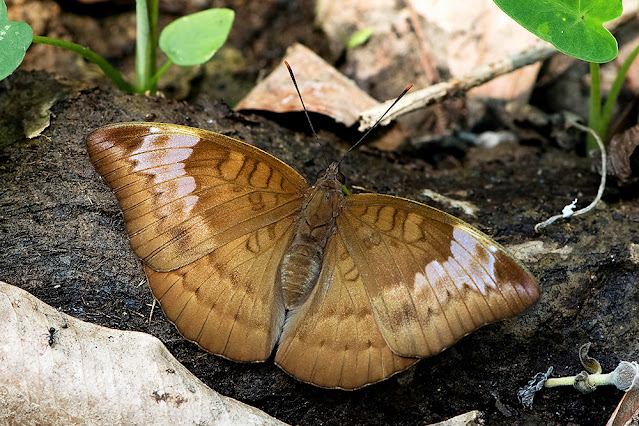
Photo taken at Lamnamkok National Park, Chiang Rai, Thailand ♀ 740m a.s.l.

Euthalia monina is widely distributed throughout most of the SE Asia region and is quite common. There is strong sexual dimorphism with differences in both appearance and size, the female being the larger of the two. The species is quite variable, especially the female whose markings are much more striking in the more southerly subspecies. Also, unusually, the male is polymorphic and there are three different forms. They are not always clearly defined and all three forms can sometimes merge on one individual.
Both sexes are regular mud puddlers. The species is multivoltine with several broods per annum. The adult female lays her eggs singly on the upper surface of a leaf on the host plant. Males are territorial, surveying their domain from the tops of bushes and trees.
Synonyms and previously used names: Papilio monina, Adolias ramada, Adolias decoratus, Adolias discipilota, Adolias kesava, Adolias salia, Euthalia kesava, Euthalia rangoonensis, Nora gardineri, Nora cordelia, Nora kesava
Taxonomy: Animalia - Arthropoda - Insecta - Lepidoptera - Nymphalidae - Limenitidinae - Euthalia - monina
Regional subspecies: E.monina erana (Indonesia), E.monina kesava (NE India, Myanmar, N.Thailand, Laos, Cambodia, Vietnam, China-Yunnan), E.monina monina (S.Thailand, W.Malaysia, Singapore), E.monina salia (Indonesia). There are also a number of other subspecies recorded amongst the islands of Indonesia and the Philippines.
Regional Distribution: India, Nepal, Bhutan, Bangladesh, Myanmar, Thailand, Laos, Cambodia, Vietnam, China, Malaysia, Singapore, Indonesia, Philippines
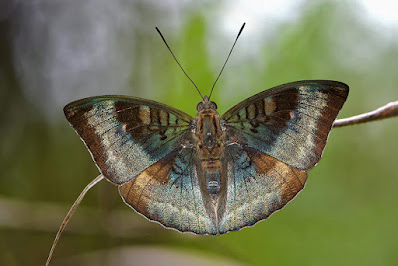 |
| Phnom Kulen, Banteay Srei, Cambodia ♂ 400m a.s.l. |
Habitat: Euthalia monina is usually found in montane forest and disturbed rainforest clearings. Mainly low to moderate elevations up to 1600m a.s.l. It only occasionally visits urban areas.
Flight time: most of the year, depending on location Wingspan: 50-70mm
Life History: egg 5 days instar 1 3 days instar 2 3 days instar 3 3 days instar 4 3-4 days instar 5 3-4 days instar 6 9-10 days pupa 8-9 days Total egg to adult 37-41 days
All times are approximate and can vary depending on the season and on the host used. The sixth instar may not always occur.
Larval Hosts: Clidemia hirta (Melastomataceae), Diospyros melanoxylon (Ebenaceae), Hancea subpeltata, Macaranga bancana, Macaranga hullettii (Euphorbiaceae), Anthoshorea roxburghii, Shorea robusta (Dipterocarpaceae), Mangifera pentandra (Anacardiaceae), Bhesa paniculata (Centroplacaceae). Actual host plant used depends upon location and availabilty of plant species.
Adult Food Sources: Nectar - Melastoma malabathricum (Melastomaceae). There may be other flower species visited but not yet recorded or observed. Other - mud puddling, animal dung, over-ripe fruits. It is particularly fond of the ripe fruits of Rhododendron.
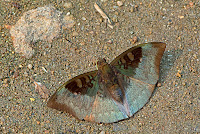 |
| Lamnamkok National Park, Chiang Rai, Thailand ♂ |
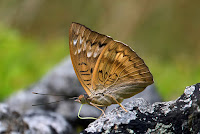 |
| Roichan Panwang Waterfall area, Krabi, Thailand ♀ |
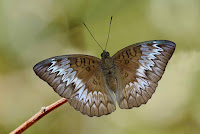 |
| Roichan Panwang Waterfall area, Krabi, Thailand ♀ |
 |
| Kuang Si Waterfall area, Luang Prabang, Laos ♂ |
 |
| Lamnamkok National Park, Chiang Rai, Thailand ♀ |
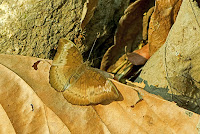 |
| Doi Suthep-Pui National Park, Chiang Mai, Thailand ♀ |
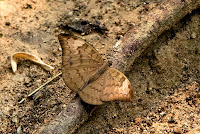 |
| Lamnamkok National Park, Chiang Rai, Thailand ♀ |
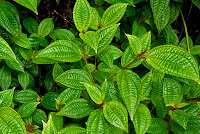 |
| Clidemia hirta, a larval host |
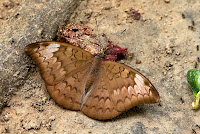 |
| Lamnamkok National Park, Chiang Rai, Thailand ♀ |
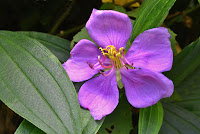 |
| Melastoma malabathricum, a nectar source |
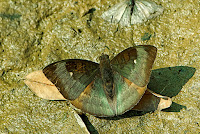 |
| Lamnamkok National Park, Chiang Rai, Thailand ♂ |
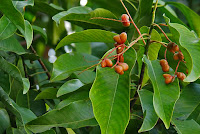 |
| Bhesa paniculata, another larval host |
Links to other pages in this series for species in the same subfamily
Athyma perius
Auzakia danava
Euthalia alpheda
Euthalia lubentina
Lasippa viraja
Limenitis asura
Neptis cartica
Neptis miah
Pantoporia hordonia
Sumalia daraxa
Athyma pravara
Bhagadatta austenia
Euthalia anosia
Euthalia monina
Lebadea martha
Limenitis dudu
Neptis clinia
Neptis nashona
Pantoporia paraka
Sumalia zulema
Athyma ranga
Cynitia cocytus
Euthalia evelina
Euthalia patala
Lexias dirtea
Moduza procris
Neptis hylas
Neptis nata
Parthenos sylvia
Tanaecia jahnu
Athyma selenophora
Euthalia aconthea
Euthalia franciae
Euthalia phemius
Lexias pardalis
Neptis ananta
Neptis magadha
Neptis soma
Phaedyma columella
Tanaecia julii
